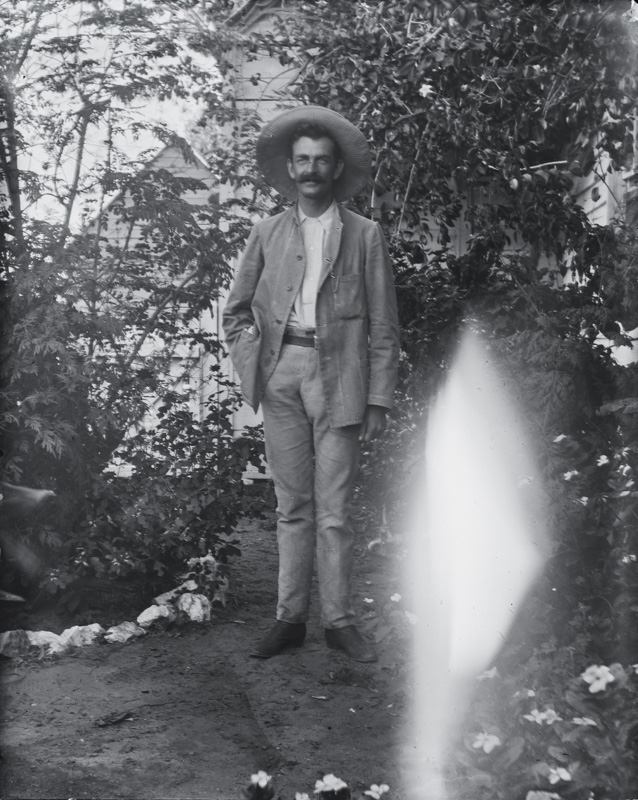Reverend Frederic Charles Hall Photographic Collection
The Photographer
The Reverend Frederic Charles Hall was born on the 26th February 1878 in Woollahra, New South Wales. As a young man he attended St Andrew’s Cathedral Choir School and later the Chinese School, joining the Chinese Choir. He volunteered for missionary service in China with the Church Missionary Association but was disappointed at not being accepted, probably for health reasons. He subsequently met Bishop Gilbert White, first Bishop of Carpentaria and eagerly grasped an invitation to be trained by him on Thursday Island. Two years of study resulted in Hall’s ordination as a Deacon and appointment as Curate at Georgetown in North Queensland, an extensive parish which embraced Burketown, Normanton, Croydon, Golden Gate and smaller settlements in the south-east Gulf country. On the 24th June 1906, he was elevated to the priesthood in a ceremony conducted at the Quetta Memorial Cathedral on Thursday Island. Hall returned to Georgetown as Curate-in-Charge until 1909, when he departed North Queensland for Sydney. Frederic Hall married Edith Searle in 1909, after an eight year engagement. They had three children: Kenwyn, Wensley and Gwyneth. He served as Curate in various parishes of the Sydney Diocese, was Rector of St. Thomas’s, Mulgoa with Greendale and Ludenham, and Rector of St. Mark’s, Picton with The Oaks and Yerranderie, until his death on the 7th February 1926, aged 48.
The Collection
Hall’s foremost hobby was photography. The photographs he produced are testament to both his technical skill and dedication to documenting the lives of the people he served. He used both a half-plate camera with tripod made by J. Lancaster and Sons, Birmingham and quarter-plate Austral No.3 made by the Australian Baker and Rouse company. Glass negatives from Ilford and Austral were used; developing was done by the photographer himself and printing by exposure to sunlight. It was the photographer’s grandson, Kenwyn Arthur Hall, who suggested to the Hall family that the collection, because of its significance to North Queensland, should be offered to James Cook University; and in 1980 JCU had prints made from the 700 odd surviving glass negatives. They were handed over, together with the half-plate camera and equipment, by Kenwyn (Snr) and Gwyneth Hall at a formal ceremony in 1982. James Cook University Library acknowledges the contributions of Mr Ken Hall of Roseville (now deceased) and Kenwyn Arthur Hall whose ongoing support has enabled the photographs to make the transition from print format to the digital environment of NQHeritage where they can be accessed and appreciated by a national and international audience of researchers.

